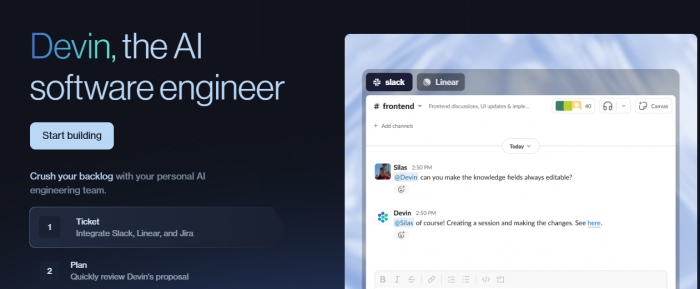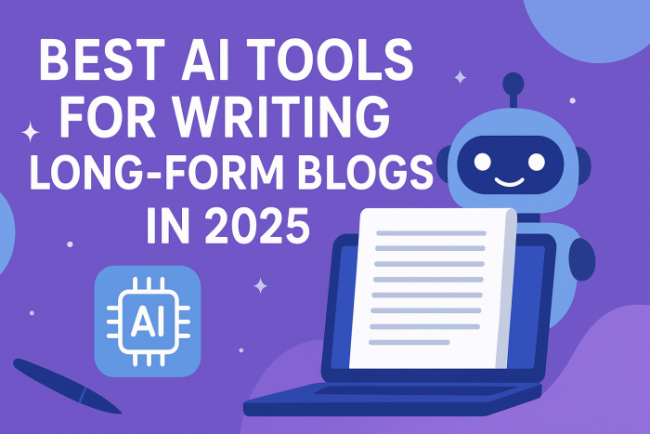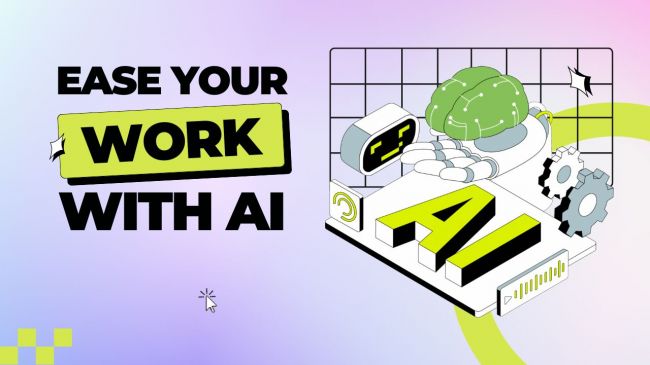On This Page
- A New Era in AI Engineering
- Why Devin Feels Different
- Real-World Proof: Nubank’s Migration Miracle
- The Catch (There Always Is One)
- Pricing
- Devin AI Pros and Cons at a Glance
- How Enterprises Actually Use Devin
- The Developer Reaction: Excitement and Anxiety
- Where Devin Works Best
- FAQ
- So, Revolution or Hype?
- Final Thought
If you’ve been following AI news lately, you’ve probably seen the buzz around Devin AI, often called the world’s first “fully autonomous software engineer.”
Depending on whom you ask, it’s either a genuine breakthrough or the latest Silicon Valley illusion.

So what’s the truth? Can Devin really replace entire teams, or is it just a powerful assistant dressed in bold marketing?
Let’s dive into what makes it different, what early adopters are experiencing, and where it still struggles to deliver.
A New Era in AI Engineering
For years, we’ve had assistants like GitHub Copilot and ChatGPT-based coders that help with snippets or syntax, but none that truly run a project.
Devin changes that equation.
Instead of merely suggesting code, it promises to plan, code, test, and deploy projects end-to-end.
On its official site, Devin is described as an engineer that “learns your workflows, executes tasks autonomously, and improves with feedback.”
Imagine a silent team member who picks up tasks on Slack, writes PRs on GitHub, and reports progress, all without the typical back-and-forth.
Why Devin Feels Different
Traditional automation tools focus on repetition; Devin focuses on understanding.
Once connected to your stack via SSO (Okta, Entra), GitHub, Slack, or Linear, it learns your structure, naming conventions, and test coverage, like onboarding a new engineer.
It then improves over time, using every pull request and code review as a learning sample.
The result? Each task fuels the next. Devin gradually predicts bottlenecks, refines its approach, and eliminates repetitive debugging loops.
That’s not an assistant. That’s a continuously evolving collaborator.
Real-World Proof: Nubank’s Migration Miracle
The story that put Devin on the map was its deployment at Nubank, one of the world’s largest digital banks.

Their challenge: migrate an 8-year-old ETL system containing millions of lines of code.
Estimates predicted 1,000 engineers × 18 months.
After Devin was onboarded, the project finished in 2 months.
The outcomes were staggering:
- 12× efficiency gain in developer hours
- 20× cost savings on the total project budget
- 4× task-speed improvement after continuous self-learning
Developers stopped writing boilerplate and focused on reviewing Devin’s output instead.
As one Nubank PM described it:
“Less prone to error, more stable, and ultimately freeing human bandwidth for more innovative tasks.”
The Catch (There Always Is One)
Devin’s potential is huge, but it’s not flawless.
Developers on Reddit and Medium describe it as “brilliant but unpredictable.”
It excels at migrations, refactors, and QA runs, but struggles with vague instructions, new architectures, or creative feature design.
So if you treat it like a senior engineer, it might disappoint, but if you train it like a fast-learning intern, it often surpasses expectations.
That’s why even the official Devin Docs advise starting with structured, low-risk tasks before going big.
Pricing
Devin isn’t free, but its pricing is flexible.

Here’s how it’s structured :
- Core Plan – starts at US $20/month, pay-as-you-go. Each “Agent Compute Unit” (ACU) costs about US $2.25.
- Team Plan – US $500/month, includes 250 ACUs (≈ US $2.00 per ACU) + parallel sessions and collaboration tools.
- Enterprise Plan – custom pricing for VPC deployments, SSO, private agents, and dedicated support.
You’re billed per ACU, meaning complex or long-running tasks consume more units — similar to how cloud compute billing works.
For individual developers or small startups, the Core Plan offers an affordable gateway.
For large engineering teams, the Team and Enterprise tiers unlock full autonomy and governance features.
Devin AI Pros and Cons at a Glance
Pros
- Entry cost is approachable (US $20/month) — easy to experiment without commitment.
- Pay-as-you-go pricing scales naturally with usage.
- Team and Enterprise tiers include API access, parallel sessions, and priority support.
- You retain full ownership of your code outputs and IP.
- Proven ROI — enterprises report 8–12× time savings and up to 20× cost reductions.
Cons
- Usage-based billing can be hard to predict — complex tasks eat ACUs fast.
- The Core Plan’s limits can feel restrictive for heavy users.
- Team plan pricing (US $500/month) may not suit casual users.
- Still requires human oversight — especially for creative or mission-critical code.
In short, Devin saves time and cost, but you’ll still need people who know when to let it run, and when to step in.
How Enterprises Actually Use Devin
Companies typically start small.
They plug Devin into a dev sandbox or staging branch, assign it migration tickets, then evaluate its pull requests.
It operates in two modes:
- Human-in-the-loop — humans review and merge PRs.
- Autonomous — Devin executes repetitive tasks (like bug fixes or QA) without intervention.
The workflow evolves organically.
Each review teaches Devin more about the codebase and standards. Over time, the feedback loop shrinks and its speed grows.
The Developer Reaction: Excitement and Anxiety
Developers are split between two moods, fascination and fear.
Some see Devin as the ultimate productivity engine, a colleague that handles the boring parts of coding.
Others worry it might chip away at creative control or future job security.
As one analyst told VentureBeat:
“Devin won’t replace developers — it will replace bad engineering habits.”
That sentiment captures the zeitgeist: AI is not here to remove people, but to reshape how they work.
Where Devin Works Best
| Task Type | Impact Potential | Risk Profile | Best Practice |
| Large migrations | Very high | Low (after tuning) | Feed past examples, review outputs |
| Legacy code QA | High | Low | Use human-in-loop approval |
| Bug fixes | High | Medium | Test in sandbox first |
| New feature development | Medium | High | Pair with PM + frequent reviews |
| Compliance/code standards | High | Low | Set guardrails, automate checks |
The takeaway: Devin thrives where rules are clear and outcomes measurable.
FAQ
How fast does Devin show results?
Most enterprises report 10× efficiency within a month of onboarding, especially for refactors and migrations.
Does it integrate easily?
Yes, it works with Slack, GitHub, Asana, Linear, and SSO tools like Okta or Entra.
Is human oversight still needed?
Yes. Full autonomy is best reserved for low-risk tasks. Humans still review and approve PRs.
What’s the real ROI?
Case studies like Nubank’s show 8–12× time savings and 20× cost cuts versus manual execution.
So, Revolution or Hype?
Probably both.
Devin is the closest we’ve come to AI-driven software engineering, but it’s still maturing.
Its strength is execution, not imagination.
The smart move for teams in 2025 is to treat Devin as a teammate, one who handles the routine while humans drive creativity.
As one Redditor put it perfectly:
“Devin isn’t taking your job. It’s taking the parts of your job you never liked doing anyway.”
Final Thought
At this point, it’s clear that Devin AI isn’t magic; it’s momentum.
It’s not here to replace engineers, but to remind us what human creativity looks like when the busywork is stripped away.
Yes, it still needs guidance. It can’t dream up a product, negotiate a roadmap, or sense what a user truly wants. But when it’s tuned right, it amplifies the people behind it, engineers, PMs, and teams who finally get to focus on the interesting parts again.
Think of Devin less as “the AI that codes” and more as the quiet colleague who never sleeps, never complains, and keeps your backlog moving when everyone else logs off.
That’s not hype, that’s the beginning of a shift in how we work.
Because the real story here isn’t AI replacing us, it’s AI freeing us to do the things only humans can.
Post Comment
Be the first to post comment!





